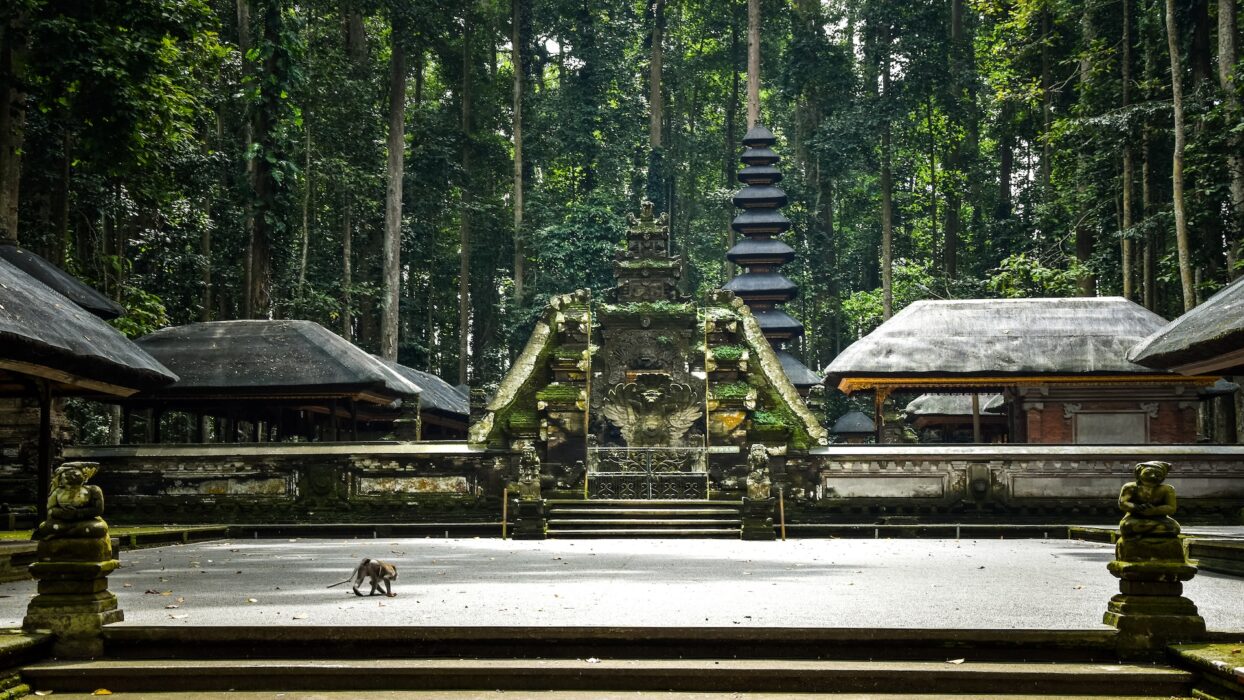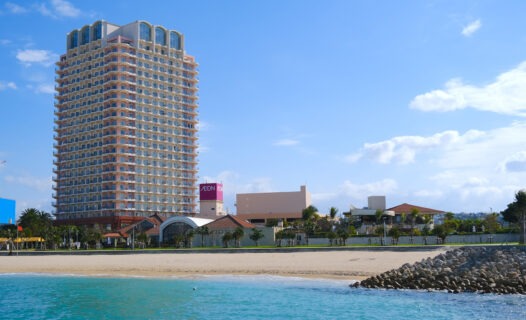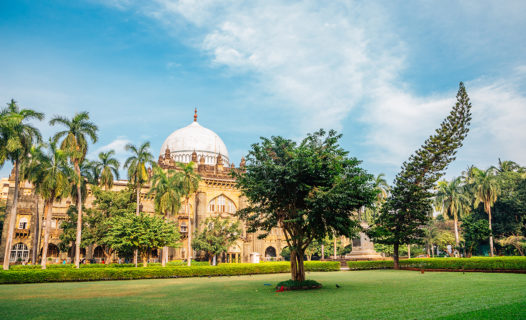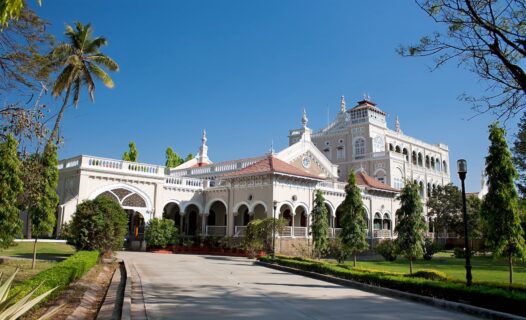Introduction
Bali, often referred to as the Island of the Gods, is a captivating destination that draws travelers not only for its stunning beaches and lush landscapes but also for its deep spiritual essence. Among the many treasures of Bali, the enchanting water temples stand out as sacred sites where spirituality and nature intertwine. These temples, with their intricate architecture and serene water features, hold immense significance, especially during the festive season when rituals and celebrations fill the air with a sense of wonder and community.
Discovering Bali’s Water Temples: A Spiritual Oasis
As you explore Bali, the allure of its water temples beckons. These sacred sites, which include both well-known and lesser-known gems, are steeped in history and culture. Each temple offers a unique glimpse into Balinese spirituality, with stunning architecture that harmonizes with the surrounding landscapes. From the iconic Tirta Empul to the serene Ulun Danu Beratan, Bali’s water temples are not just places of worship; they are spiritual oases that invite visitors to connect with the island’s rich heritage.
While many travelers flock to popular temples, such as Tirta Empul and Ulun Danu Beratan, there are hidden treasures waiting to be discovered. Temples like Pura Taman Ayun, with its stunning water gardens, and the serene Pura Ulun Danu Batur, perched on the shores of Lake Batur, offer a quieter, yet equally enriching experience. Each temple tells a story, inviting you to immerse yourself in the spiritual water sites of Bali.
During the festive season, these temples come alive with vibrant ceremonies and rituals, showcasing the island’s rich cultural tapestry. Visitors can witness the beauty of Balinese temple festivals and experience the warmth of the local community as they come together to honor their traditions. Whether you’re seeking spiritual renewal or simply a moment of tranquility, Bali’s water temples are sure to leave an indelible mark on your heart.
Tirta Empul Temple: The Heart of Water Purification
Welcome to Tirta Empul Temple, where the soothing sounds of flowing water and the scent of incense create an atmosphere of peace and reverence. This temple is not just a beautiful sight; it’s a living embodiment of Balinese spirituality, famous for its sacred spring that has been a site for purification rituals for centuries. Imagine stepping into a place where locals and visitors alike gather to cleanse their spirits and embrace the healing waters—what a magical experience!
History and Architecture of Tirta Empul
Built in 962 A.D. during the reign of King Chandra Bhatara, Tirta Empul is steeped in history. Legend has it that the temple was created following a battle between the gods and demons, with the waters emerging from the ground as a result of the victory. The architecture is a stunning display of traditional Balinese style, featuring intricate carvings and beautifully manicured gardens that reflect the island’s rich cultural heritage. As you stroll through the temple grounds, don’t forget to take in the majestic pagodas and the serene lotus ponds that add to its allure.
The Sacred Spring and Rituals of Purification
The highlight of Tirta Empul is undoubtedly the sacred spring, where visitors partake in a traditional purification ritual. Locals believe that bathing in the waters can cleanse the body and soul, washing away negative energy. As you join the ceremony, you’ll notice the gentle guidance of the local priests, who will lead you through the process of offering prayers and immersing yourself in the healing waters. Don’t be shy—this is a unique opportunity to experience Balinese spirituality up close!
Visitor Experiences and Tips
Visiting Tirta Empul is a truly immersive experience. To make the most of your visit, consider arriving early in the morning to witness the temple at its most tranquil. Wear a sarong and a sash, which can be rented on-site, as a sign of respect. Remember to bring a change of clothes if you plan to participate in the purification ritual! Afterward, take a moment to explore the nearby rice fields and enjoy a delicious meal at a local warung. You’ll leave with a renewed spirit and a camera full of beautiful memories!
Ulun Danu Beratan: A Serene Reflection Amidst Nature
Next up is Ulun Danu Beratan Temple, a breathtaking sight set against the backdrop of Lake Beratan. This temple is a true gem, known for its stunning architecture and serene atmosphere. As you approach, you’ll be captivated by the view of the temple rising above the water, with the misty mountains providing a picturesque frame. It’s no wonder this temple is one of the most photographed spots in Bali!
Architectural Highlights and Cultural Significance
Ulun Danu Beratan is dedicated to Dewi Danu, the goddess of water, and serves as a vital source of irrigation for the surrounding rice paddies. The temple complex features a series of pagodas, each with its own unique design and significance. The most iconic structure is the 11-tiered meru, which stands tall and proud, symbolizing the connection between the earthly and the divine. Take your time to explore the intricate carvings and serene gardens that surround the temple.
Festivals Celebrated at Ulun Danu
Throughout the year, Ulun Danu Beratan hosts various festivals that showcase Bali’s rich cultural heritage. One of the most significant is the Temple Festival, where locals offer prayers and colorful offerings to the goddess. If you’re lucky enough to visit during this time, you’ll witness traditional dances, music, and vibrant ceremonies that bring the temple to life. It’s a feast for the senses!
Photography Tips for Capturing the Essence
For photography enthusiasts, Ulun Danu Beratan is a dream come true. The best time to capture its beauty is during sunrise or sunset when the light creates a magical ambiance. Don’t forget to experiment with reflections in the lake for stunning shots! A wide-angle lens can help capture the grandeur of the temple against the expansive landscape. And be sure to snap a few selfies with the temple as your backdrop!
Pura Taman Ayun: A Royal Water Garden Experience
Welcome to Pura Taman Ayun, a temple that feels like stepping into a royal garden. This UNESCO World Heritage site is not only a place of worship but also a stunning representation of Balinese culture and artistry. Surrounded by lush gardens and a tranquil moat, Taman Ayun is a feast for the eyes and the soul.
Historical Context and Royal Significance
Built in the 17th century, Pura Taman Ayun was the royal temple of the Mengwi dynasty. The name translates to "beautiful garden," and it’s easy to see why! The temple grounds are adorned with lotus ponds and vibrant greenery, creating a serene environment perfect for reflection. As you walk through the temple, you’ll feel the echoes of history and the reverence that locals have for this sacred site.
Exploring the Water Gardens and Surroundings
Take your time exploring the exquisite water gardens that surround the temple. The layout is designed to symbolize the Balinese concept of the universe, with the temple representing the center. Stroll along the pathways lined with tropical flowers, and don’t forget to snap some pictures of the beautifully designed shrines. Each corner of Taman Ayun offers a new perspective, making it a photographer’s paradise!
Local Festivals and Ceremonies
Pura Taman Ayun is alive with local festivals throughout the year. One of the most vibrant is the Pagerwesi, a festival dedicated to the gods and ancestors. During this time, the temple is adorned with colorful offerings, and the community comes together to celebrate with traditional dances and music. If you’re in Bali during this festival, you’ll have the chance to witness the deep-rooted cultural practices that make Bali so special.
Day-by-Day Itinerary for Exploring Bali’s Water Temples
Ready to dive into your adventure? Here’s a suggested day-by-day itinerary to make the most of your temple-hopping experience in Bali!
Day 1: Tirta Empul and Local Market Exploration
Start your journey at Tirta Empul Temple, where you can participate in the purification ritual. After soaking in the spiritual vibes, head to a nearby local market for some delicious Balinese street food. Try the Nasi Goreng and Satay for an authentic flavor experience!
Day 2: Ulun Danu Beratan and Scenic Nature Walks
On your second day, visit the enchanting Ulun Danu Beratan. Spend the morning exploring the temple, then take a scenic walk around the lake. The fresh air and stunning views will rejuvenate your spirit. Don’t forget to grab a cup of Bali coffee from a local café!
Day 3: Pura Taman Ayun and Cultural Festivities
Your final day should be dedicated to Pura Taman Ayun. Wander through the beautiful gardens, and if you’re lucky, catch a local festival. Enjoy traditional Balinese dishes at a nearby restaurant to wrap up your temple tour with a culinary delight!
With this itinerary, you’ll have a well-rounded experience of Bali’s water temples, blending spirituality, culture, and delicious food!
Fun Facts About Bali’s Water Temples
Did you know that Bali is home to over 1,000 temples? Among them, the water temples play a crucial role in the island’s irrigation system, known as the Subak. This cooperative water management system is recognized by UNESCO as a cultural heritage! Here are a few more fun tidbits:
- Many temples are built near water sources, symbolizing the importance of water in Balinese culture.
- Each temple has its own unique offerings and rituals that vary by region.
- Visitors are often invited to participate in ceremonies, making it a truly immersive experience.
Historical Context and Folklore of Bali’s Water Temples
The history of Bali’s water temples is rich with myths and legends. For instance, Tirta Empul is said to have been created by the god Indra, who struck the ground with his spear to create the holy spring. This tale highlights the spiritual connection between the Balinese people and their temples. Similarly, Ulun Danu Beratan is linked to the goddess of water, who is believed to protect the island’s water supplies. These stories not only enrich the experience but also connect visitors to the island’s cultural roots.
Myths and Stories of Tirta Empul
One fascinating myth surrounding Tirta Empul involves a battle between good and evil. The waters of the temple are said to have healing properties, and many locals believe that a dip in the sacred spring can cure ailments and bring good fortune. This belief draws countless visitors seeking both spiritual and physical healing.
Folklore of Ulun Danu Beratan
Ulun Danu Beratan is steeped in stories of the goddess Dewi Danu, who is revered for her role in providing water for agriculture. Folklore suggests that she watches over the temple and its surroundings, ensuring that the waters remain pure and plentiful. This connection to nature and spirituality is what makes Ulun Danu a must-visit for anyone exploring Bali.
Cultural Practices and Their Origins
The rituals and ceremonies at Bali’s water temples are deeply rooted in Hindu beliefs. Each offering made at the temples is a form of gratitude to the gods for their blessings. Visitors often witness locals preparing intricate offerings, which consist of flowers, fruits, and other symbolic items. Participating in or observing these practices provides a unique insight into the Balinese way of life.
Culinary Deep Dive: Temples and Local Delicacies
Exploring Bali’s water temples isn’t complete without indulging in the local cuisine! Here’s a guide to some mouthwatering dishes you can find near the temples.
Must-Try Dishes Near Tirta Empul
After your visit to Tirta Empul, treat yourself to some Bebek Betutu, a traditional Balinese dish of slow-cooked duck seasoned with a blend of spices. Pair it with Urap, a salad made from steamed vegetables mixed with grated coconut. You’ll be in culinary heaven!
Local Warungs Around Ulun Danu
Near Ulun Danu, you’ll find charming warungs serving up delicious Nasi Campur, a plate of rice accompanied by various side dishes. Don’t miss the chance to try Tempeh, a local favorite made from fermented soybeans that’s both tasty and healthy!
Culinary Festivals and Food Markets
Keep an eye out for food festivals celebrating Balinese cuisine. These events often feature cooking demonstrations, tastings, and local delicacies that showcase the island’s rich culinary heritage. It’s a fantastic way to immerse yourself in the local culture while enjoying some delicious food!
Festivals and Events at Bali’s Water Temples
Bali’s water temples are vibrant hubs of cultural activity, especially during festivals. Here’s what to expect when visiting during these special times.
Major Festivals at Tirta Empul
At Tirta Empul, the Melasti ceremony is a highlight, where offerings are made to the sea to purify the island. This colorful event involves a procession of locals carrying offerings to the temple, creating a beautiful spectacle of devotion and community spirit.
Celebrations at Ulun Danu Beratan
Ulun Danu hosts the Odalan festival, celebrating the temple’s anniversary. Visitors can witness traditional dances, music performances, and vibrant offerings that fill the temple grounds with life and color. It’s a wonderful opportunity to experience the heart of Balinese culture!
Community Involvement in Temple Events
Local communities play a vital role in these temple events. The sense of togetherness during festivals is palpable, as families come together to prepare offerings and participate in rituals. Engaging with locals during these celebrations offers a deeper understanding of Balinese culture and traditions.
Practical Information for Travelers: Tips and Tricks
Planning your visit to Bali’s water temples? Here are some essential tips to enhance your experience!
Dress Code and Etiquette at Temples
When visiting temples, it’s important to dress modestly. A sarong and sash are typically required, which can often be rented or borrowed at the entrance. Always be respectful and follow local customs, such as not walking in front of someone praying or taking photos during ceremonies.
Opening Hours and Best Times to Visit
Most water temples are open from early morning until late afternoon. Early mornings are ideal for a peaceful experience, while late afternoons can be busier with locals and tourists alike. Check specific temple hours before your visit to plan accordingly!
Transportation Options for Temple Tours
Getting around Bali can be a breeze! Consider hiring a private driver for the day, as they can take you to multiple temples and share local insights along the way. Alternatively, you can rent a scooter if you’re feeling adventurous, but always prioritize safety!
Sustainability and Conservation Focus: Protecting Bali’s Sacred Sites
As you explore Bali’s water temples, it’s crucial to think about sustainability and how to protect these sacred sites for future generations. Here are some ways you can contribute.
Initiatives for Temple Conservation
Many local organizations are dedicated to preserving Bali’s cultural heritage and natural environment. Participating in eco-tourism initiatives or supporting local artisans can help sustain these efforts. Look for opportunities to engage with conservation projects during your visit!
How Travelers Can Contribute
Being a responsible traveler means respecting local customs and the environment. Always dispose of waste properly, avoid single-use plastics, and support local businesses. Your choices can make a significant impact on preserving Bali’s beauty!
Eco-Friendly Practices to Follow
Consider staying in eco-friendly accommodations and participating in activities that promote sustainability. From beach clean-ups to nature walks, there are many ways to give back to the island while enjoying its natural wonders.
Outdoor Sports and Activities Near Water Temples
For those seeking adventure, Bali offers a plethora of outdoor activities near its water temples. Here’s how to make the most of your time!
Hiking Trails Near Tirta Empul
After visiting Tirta Empul, consider exploring the nearby hiking trails. The lush landscapes and rice terraces provide a stunning backdrop for a day of trekking. Keep your camera ready for breathtaking views!
Water Sports at Ulun Danu Beratan
Lake Beratan is perfect for water sports like kayaking and paddleboarding. Rent equipment nearby and enjoy a day on the water, soaking in the stunning scenery while getting a little exercise!
Yoga and Meditation Retreats
Bali is known for its wellness retreats, and many offer yoga and meditation classes near the temples. Join a session to unwind and connect with the tranquil energy of the island. It’s a fantastic way to enhance your spiritual journey!
Shopping Guide: Souvenirs and Local Crafts
Don’t forget to pick up some unique souvenirs to remember your trip! Here’s where to shop near the temples.
Best Markets Near Tirta Empul
After your visit to Tirta Empul, explore the local markets where you can find handmade crafts, traditional clothing, and beautiful jewelry. Bargaining is common, so don’t hesitate to negotiate for the best price!
Handicrafts from Local Artisans
Support local artisans by purchasing their crafts. Look for items like batik textiles, wood carvings, and silver jewelry that showcase the rich Balinese culture. These unique pieces make for perfect gifts or keepsakes!
Cultural Souvenirs to Remember Your Trip
Consider bringing home some traditional Balinese offerings or incense as a reminder of your spiritual journey. These items carry the essence of Bali and can be a beautiful way to share your experience with others.
Seasonal Travel Insights: Best Times to Visit Bali’s Water Temples
Timing your visit can greatly enhance your experience at Bali’s water temples. Here’s what to keep in mind!
Weather Considerations
Bali has a tropical climate, with the dry season running from April to October. This is the best time to visit for sunny days and pleasant temperatures. The wet season, from November to March, can bring heavy rain, but it’s also a time when the island is lush and green.
Peak Tourist Seasons and Off-Peak Benefits
The peak tourist season typically falls during July and August, as well as around Christmas and New Year. If you prefer a quieter experience, consider visiting during the shoulder seasons of April-May or September-October. You’ll enjoy fewer crowds and more personal interactions!
Seasonal Festivals and Events
Keep an eye on the Balinese calendar for seasonal festivals! Each temple has its own unique celebrations, and attending these events can provide a deeper understanding of the island’s culture. Check local listings for festival dates and plan your visit accordingly!
Commonly Asked Questions (FAQs)
Here are some frequently asked questions about visiting Bali’s water temples:
What Should I Wear to the Temples?
Dress modestly when visiting temples. A sarong and sash are usually required, which can be rented on-site. It’s important to respect local customs and dress appropriately.
Are There Entry Fees for the Temples?
Most temples have a small entry fee, which typically goes towards maintenance and preservation efforts. It’s a small price to pay for such enriching experiences!
Can I Participate in Rituals as a Visitor?
Yes! Many temples welcome visitors to participate in rituals. Just be respectful and follow the guidance of local priests. It’s an incredible way to connect with Balinese culture!
Exploring Bali’s water temples is an unforgettable experience filled with spiritual discovery, stunning landscapes, and rich cultural traditions. As you wander through these sacred sites, you’ll find not just beautiful architecture, but also a deep sense of connection to the island’s heritage. So pack your bags, grab your camera, and get ready for an adventure that will leave you enchanted!




















